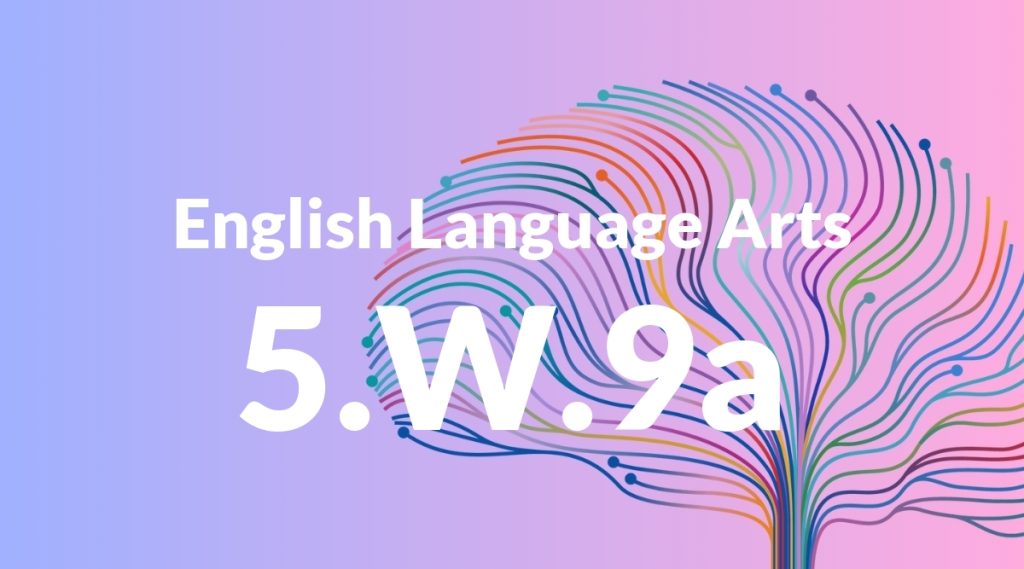Standard: 5.W.9a – Apply grade 5 Reading standards to literature (e.g., “Compare and contrast two or more characters, settings, or events in a story or a drama, drawing on specific details in the text [e.g., how characters interact]”).
Grade level: Grade 5
Subject: English Language Arts
Domain: Writing
Teacher Overview
This standard focuses on helping students apply their reading skills to analyze literature. By comparing and contrasting characters, settings, or events, students deepen their understanding of the text and improve their analytical skills. This standard is crucial as it builds a foundation for more advanced literary analysis in higher grades. Students should be able to identify basic elements of a story, such as characters, settings, and events. They should also have some experience with comparing and contrasting simpler elements in texts.
After mastering this standard, students will be able to tackle more complex texts and perform deeper literary analyses. They will also be better prepared for writing assignments that require a nuanced understanding of characters and events.
Common Misconception 1
Some students might think that comparing characters only involves looking at their physical traits. This is incorrect because a thorough comparison should also include characters’ actions, motivations, and relationships.
Intervention 1
Use graphic organizers like Venn diagrams to help students map out and visualize the different aspects of characters beyond just physical traits.
Common Misconception 2
Another common misconception is that characters must be completely similar or completely different. This is not true, as characters can share some traits while differing in others, adding depth to their roles in the story.
Intervention 2
Provide examples from well-known stories where characters have both similarities and differences. Discuss these examples in class to illustrate the complexity of character analysis.
Prerequisite Knowledge
Students should have a basic understanding of identifying characters, settings, and events in a story. They should also be familiar with the concept of comparing and contrasting and have practiced these skills in simpler contexts.
Subsequent Knowledge
Students will develop the ability to analyze more complex texts, understanding deeper character motivations and themes. They will also be able to apply these skills in writing their own stories and essays.
Instructional Activities
- Create a Venn diagram comparing two characters from a book.
- Write a short essay discussing the similarities and differences between two settings in a story.
- Group discussion analyzing the interactions between characters in a drama.
- Role-playing activities to explore character motivations.
- Drawing scenes to visually represent character relationships and settings.




